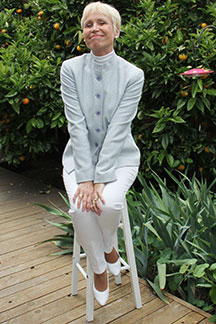Germany’s word of the year for 2015 is Fluechtlinge – refugees. After having taken in 1 million refugees during the past twelve months – most of them from the Middle East – the word Fluechtlinge has been on the collective German mind. TIME Magazine named German Chancellor Angela Merkel “Person of the Year 2015” for standing her ground relative to the refugee crisis http://time.com/time-person-of-the-year-2015-angela-merkel-choice/. Despite growing discontent among the populace, Merkel has continued to put humanity, generosity and tolerance above all else and stated repeatedly, “Wir schaffen es – we can do it.”
How is the word of the year selected?
The Gesellschaft fuer Deutsche Sprache (Society for the German Language), located in the city of Wiesbaden, chooses a word or a group of words every December. The word is to embody a key topic that dominated German political, economic or social life during the preceding twelve months. This year’s word was chosen from close to 2,500 entries and published in “Wort des Jahres” (Word of the Year), the group’s annual publication.
Runner-ups for the word of the year
This year, the Gesellschaft fuer Deutsche Sprache selected Fluechtlinge as the word of the year. Runner-ups were Je suis Charlie – I am Charlie, the mantra of solidarity with Paris in the wake of the attacks on the satirical magazine Charlie Hebdo. Another strong contender for the word of the year was Grexit, which refers to the scenario of Greece leaving the Eurozone. And lastly, Wir schaffen es – We can do it, coined by Angela Merkel and expressing her conviction that Germany can successfully cope with the massive influx of refugees.
Previous words of the year
Each year, the word of the year has reflected the zeitgeist. In 1989, the word was Reisefreiheit – Freedom to Travel, the demand of the East German people that led to the fall of the Wall. Post-unification in 1991, former East Germans sensed that their West German brothers had come to regard their achievements under communist rule as inferior. That’s when the term “Besserwessi” cropped up. “Besser” and “wissen” refer to knowing everything better, and “Wessi” was an informal name for a citizen of West Germany. The changeover from Deutsche Mark to Euro made Germans question whether the introduction of the Euro had not prompted a hidden price increase. And in 2002, the new currency came to be referred to as the Teuro, a pricey Euro, based on the German word “teuer,” meaning expensive.
For a sneak peek at the first 20+ pages of my memoir, Walled-In: A West Berlin Girl’s Journey to Freedom, click “Download a free excerpt” on the home page of http://www.walled-in-berlin.com




















